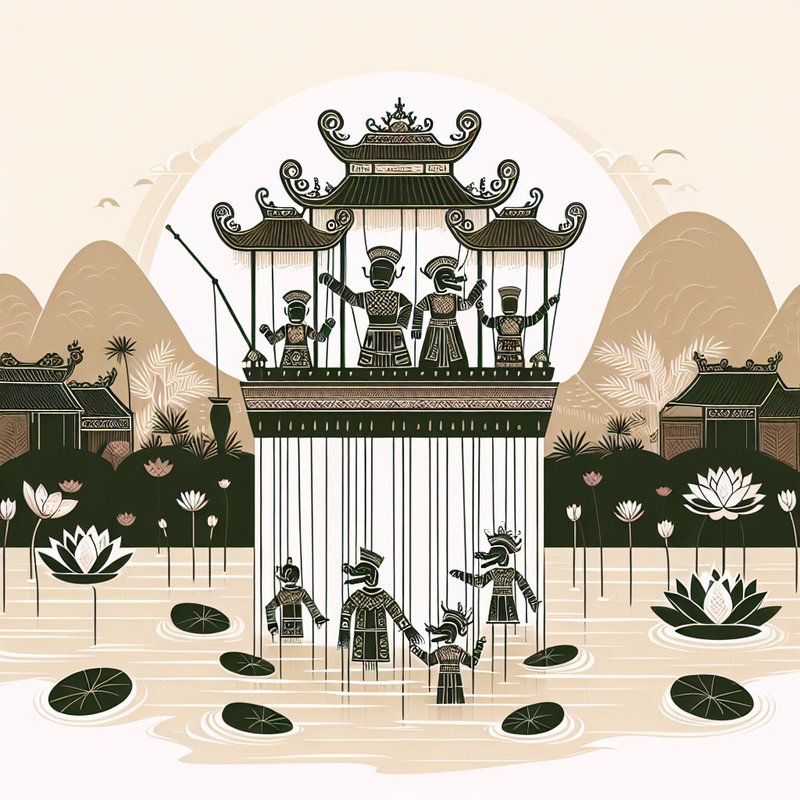The Origins of Water Puppetry

Water puppetry, known as ‘Múa rối nước’ in Vietnamese, dates back to the 11th century in the Red River Delta region. Originally performed in rice paddies flooded with water, it began as an entertainment form for villagers during festivals and harvests.
The art form is believed to have been inspired by the agricultural lifestyle of the Vietnamese people. The water not only symbolizes life but also acts as a stage that adds a unique dynamic to the puppetry.
Techniques and Elements of the Performance

The stage for water puppetry is a pool of water, behind which the puppeteers stand waist-deep, controlling the puppets using long bamboo poles and string mechanisms hidden beneath the water’s surface. This intricate method makes the puppets appear as if they are moving on their own.
Traditional performances are accompanied by live music using traditional Vietnamese instruments. The musicians not only provide the soundtrack but also interact with the puppets, adding an extra layer of entertainment and engagement for the audience.
Stories and Themes in Water Puppetry

The stories depicted in water puppetry are often drawn from Vietnamese folklore, legends, and rural life. Common themes include heroic tales of warriors, humorous village scenes, and mythical creatures.
Through these performances, moral lessons and cultural values are conveyed, making water puppetry not just a form of entertainment but also a means of cultural education for younger generations.
Water Puppetry in Modern Times

Today, water puppetry remains a beloved art form in Vietnam and is performed regularly for both locals and tourists. The Thang Long Water Puppet Theatre in Hanoi is one of the most famous venues where this traditional art is showcased.
The art form has also gained international recognition, with Vietnamese water puppetry troupes performing at cultural festivals around the world, thus promoting Vietnamese culture globally.

Leave a Reply